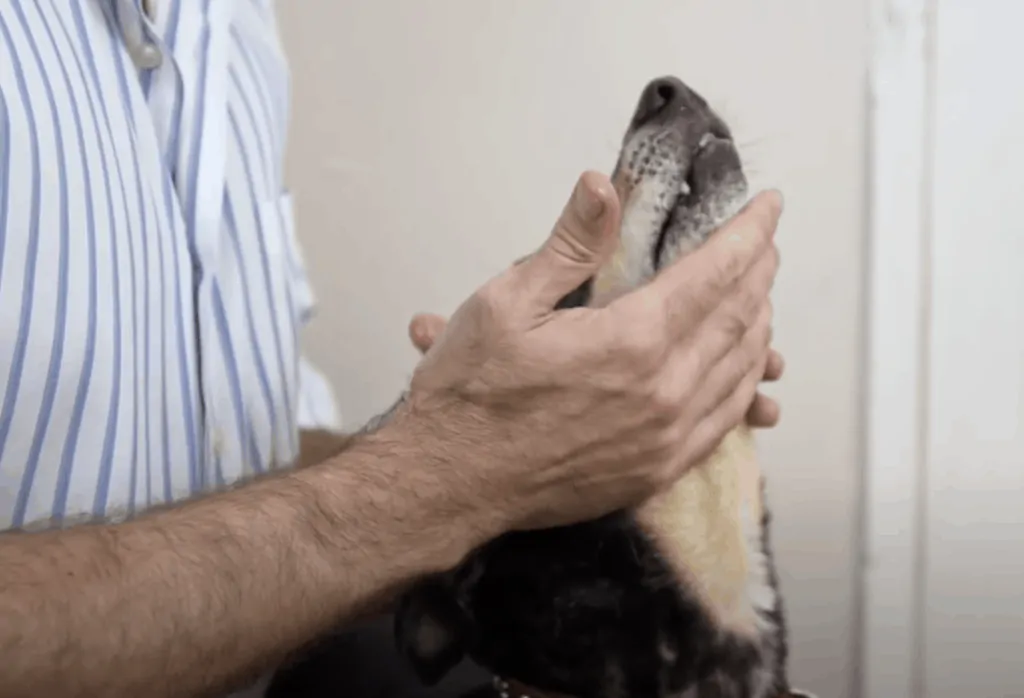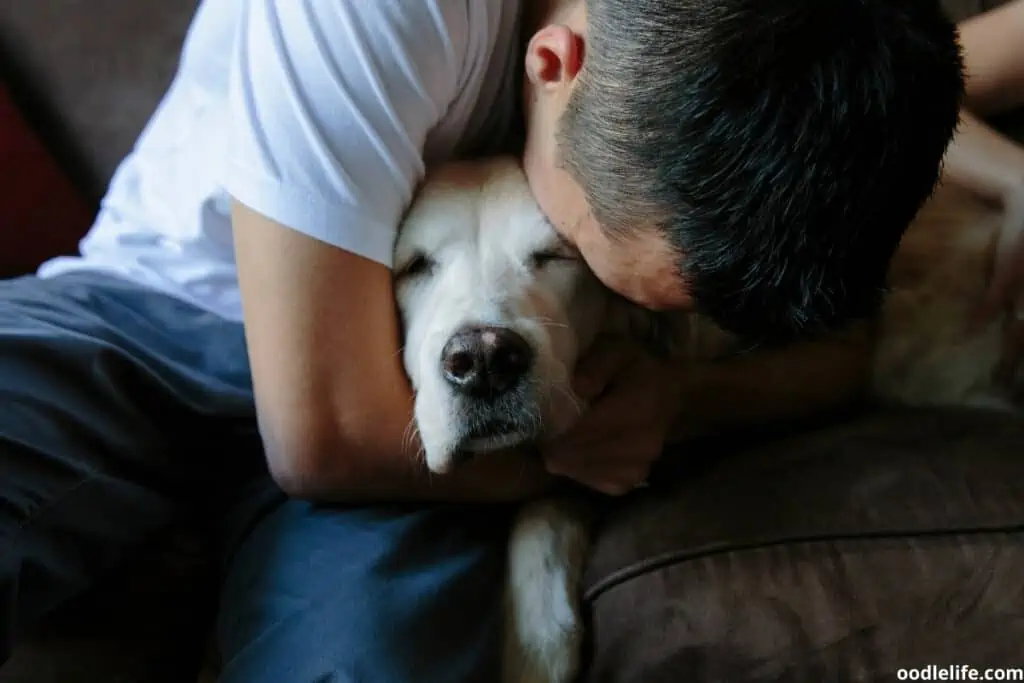When to Put Down a Dog With Seizures?
Knowing that your dog is not feeling well brings a nagging and unpleasant feeling. It feels worse when you see your dog getting sicker over time.
As dog parents, one of your priorities aside from ensuring that you provide a loving and secure home for your dog is to keep it healthy. But if you witness your dog suddenly convulsing, collapsing, or worse, looking like it’s dying one morning, it can be a deeply disturbing experience.

You wonder what’s wrong and what to do next.
This sad truth of dogs having seizures can be frightening. But if this is your new reality, it’s time for you to empower yourself with information on dogs and seizures. And this article may even answer one significant question that you can’t even say out loud.
Always, always, talk to your Vet. If you are having these thoughts they have the answers. They will not be upset, or think you are heartless.
What are Dog Seizures?
Seizures in dogs are scary for you and your beloved pooch. This is one of the most common neurological conditions that your canine can experience.
Sometimes, a dog seizure is also called a convulsion or a fit. This is an involuntary and momentary disturbance of your dog’s regular brain operation. It is mainly characterized by uncontrollable muscle activity, primarily due to an unfamiliar electric activity happening in your pet’s brain.
These episodes can be a single event or can also be multiple episodes. Multiple seizures within 24 hours are called cluster seizures.

Causes of Dog Seizures
A dog seizure can be a symptom of another serious medical condition like epilepsy, but aside from this common diagnosis, seizures can also be due to the following:
- Structural damage to the brain due to an accident, blunt trauma, head injury, infection, brain cancer, or brain tumor.
- Health issues outside of the brain like low blood sugar, anemia, encephalitis, liver disease, and kidney disease.
- Exposure or ingestion of chemical/s or poison/s.
- Electrolyte problems.

Kinds of Dog Seizures
Scary as it is, observing and getting as many details about your dog’s seizure and the physical impact it has on your dog is critical because you have to relay this information to your vet. Only then will your vet understand the kind of seizure your dog experienced.
There are different types of seizures, and some of them are:
1. Generalized Seizure
This is also called a grand mal seizure. An abnormal electrical activity causes it to occur throughout your dog’s brain. This usually lasts from seconds to minutes and can cause your dog to convulse and lose consciousness.

2. Focal Seizure
This kind of seizure only happens to a part of your dog’s brain. And as a result, you may observe unusual and sporadic movements on one side of your dog’s body. You may only see it on one limb.
Focal seizures only last for seconds. However, they can start as focal but eventually progress into a generalized kind of seizure.

3. Psychomotor Seizure
This type of seizure is characterized by your dog engaging in weird behavior for just a few minutes. Your pet may start attacking an imaginary object or go after its tail.
Psychomotor seizure is challenging to identify because some dogs have episodes of “craziness,” which is normal. Still, a canine with this kind of seizure will always repeat the same activity every time they have a seizure attack.

4. Idiopathic Epilepsy
When the seizures arise from an unknown cause, it is diagnosed as idiopathic epilepsy. Usually, dogs between six months and six years of age are prone to this kind of seizure.
All dog breeds can get seizures, but breeds like Australian Shepherds, Border Collies, Beagles, Belgian Tervurens, Collies, German Shepherds, and Labrador Retrievers are more susceptible to these convulsions.

Understanding What Happens During A Seizure
As a pet parent, you’d want to know what’s happening to your dog and if there’s anything you can do to make the seizure go away. The episode does stop naturally and gradually.
These are the 3 stages of a seizure.
1. Pre-ictal or Aura Phase
This is like a premonition period where your dog senses that something is off, and something unpleasant is about to happen. You can observe a slight difference in your pooch’s behavior.
Your dog may appear restless, anxious, hide or cower somewhere, or seek you. It may also attempt to communicate to you verbally by whining.
Other indications of the Aura phase are drooling, shaking, and discomfort. This phase lasts anywhere between mere seconds and hours before the actual seizure.

2. Ictal Phase
This is when the seizure is happening, and unfortunately, there is no timeline for it.
The seizure can last for a few minutes to a couple of minutes, but watching your dog go through this can feel like the longest minutes of your life.
During this phase, your dog will experience changes ranging from mild to severe changes in mental awareness. Your dog may sport a dazed look and may just stare aimlessly and lick its lips. You may observe mild to extreme shivers during this phase.
At this point, there is also the possibility of your dog losing consciousness and normal body functions, especially if the seizures reach a grand mal or are full-blown. When this happens, your dog’s muscles will move spastically and irregularly.
Your dog may fall on its side and make paddling movements with its legs while appearing paralyzed. Your dog’s head is also drawn backward at this stage, and defecation, salivation, and urination are likely to occur.
Ideally, the Ictal Phase should only be five minutes or less. Anything longer means that your dog is already experiencing prolonged seizures or status epilepticus.

3. Post-Ictal Phase
These are the seconds immediately after the actual seizure ends. Your dog will appear disoriented and confused, and it may continue salivating.
If your dog gets up immediately, it may pace restlessly but, otherwise, be alright. There is also no direct connection between the severity and length of the seizure to the recovery duration in the post-Ictal phase.
Some dogs may look and act confused for a few seconds and be back to normal as if nothing happened, while others may take a few more minutes to recover.

Pain Caused By Seizures
Seeing your dog having a seizure can be traumatic. It looks violent, somewhat dramatic, and painful.
Despite how it looks, seizures don’t cause your dog any pain. Yes, it can scare your dog and cause it to panic and get confused, but beyond that, there is no physical impact or pain from the seizures.
And contrary to popular belief, during a seizure, dogs don’t swallow their tongues. So when your dog is having an episode, do not put anything in its mouth, as this can cause more harm than good. You may accidentally get bitten or, worse, further injure your canine.
Taking Your Dog To The Vet
Dog parents who witness their dog having a seizure would want to know what’s happening right away, so a trip to the vet is imperative.
Once you reach your vet, provide all the details that you can remember. Be as specific as possible, following the correct sequence of events.
This information from you can help your vet provide accurate diagnosis and treatment. Expect your vet to run some tests on your dog, including a complete physical exam and some lab work. They may also recommend an MRI or other diagnostic imaging to check on any brain lesions.
Your vet will then prescribe medication and treatment based on the results of the tests. They may give you extra medication to help manage future episodes, if any. Should they occur, give them to your dog religiously.

When To Put Down A Dog With Seizures?
If the seizures were caused due to epilepsy, you and your dog are faced with a significant challenge.
It’s normal for you to feel helpless. No dog owner wants to let their dog suffer. But the simple thought of euthanizing your dog is also traumatic.
So is there an ideal time to put down a dog with seizures? Putting down a dog that suffers from seizures is entirely a personal decision.
If you are talking about canine epilepsy, there is no cure for this medical condition. When a dog has seizures, it can shorten its lifespan. However, some can live a good and quality life with consistent and effective medication and commitment from their owners.
Deciding the most appropriate time to put down your dog is all up to you. The best person to assist, advise, and educate you on what to expect is your vet.

Factors To Consider Before Deciding To Put Down A Dog
Understanding the seizures and what the future means for your dog can help you decide if it is time to put down your dog.
But aside from educating yourself, here are other factors that can help you decide the best and most humane option for your dog.
Are there treatment options?
Knowing the diagnosis and the possible treatment plan can impact your decision. If, for instance, the seizures are a result of epilepsy, your vet will have a different treatment plan compared to if it is a symptom of poisoning.
Seizures don’t automatically mean your dog has epilepsy—to debunk a popular misconception. And yes, there are available treatment options.
There is a high chance that the vet will start your dog’s seizure treatment by prescribing anticonvulsant medicines. This medication should help prevent further episodes but must be given consistently as halting it for any reason can cause your dog to have more severe and dangerous seizures.

Can you commit to the treatment?
This doesn’t only mean giving your dog’s medicines on time and bringing your dog for its regular check-ups.
Will you be emotionally prepared for whatever happens to your dog?
This also means a spike in vet bills as tests would need to be done regularly, and it can cause big hits on your finances. Also, can you invest more time with your dog than before?

What does the future look like for your dog?
Your dog depends on you to make decisions on its behalf. Will regular seizures affect your pet? Will it stop your pet from running around and playing with the family, protecting the family, and being a companion?
Your dog wouldn’t care less about having a seizure because, after a few minutes, your presence is assurance enough that everything is alright. But what happens after an episode?
You have to weigh if these seizures are the beginnings of more physical suffering for your dog.

Is there something you can do during your dog’s seizure?
Yes, there is. When your dog is having a seizure, make sure that the place around is safe and that there is no risk of your pet getting hurt like falling on dangerous objects or objects falling on your dog.
At first, you have that strong urge to be physically present and near your dog, if it’s having an episode. This is fine, so you can observe it closely and relay it to your vet. You can even record your dog’s so your vet can watch firsthand what’s happening.
Eventually, being there post-seizures is very important. Your presence can bring comfort and reassurance to your otherwise confused, tired, and overwhelmed dog.

Final Thoughts
If you are having concerns, talk to your Vet. Start the conversation!
If you feel that you can be there for your dog, commit to giving the proper treatment, bring your dog to check-ups, and can personally overcome the trauma, there is no reason for you to put your dog down. Put your game face on and assure your dog that you’ll be there all the way.
Additionally, if your dog isn’t showing adverse signs of having these seizures and you have your vet’s vote of confidence, enjoy many more years together. Don’t let this looming question of when to put your dog down interrupt your happy and strong relationship.